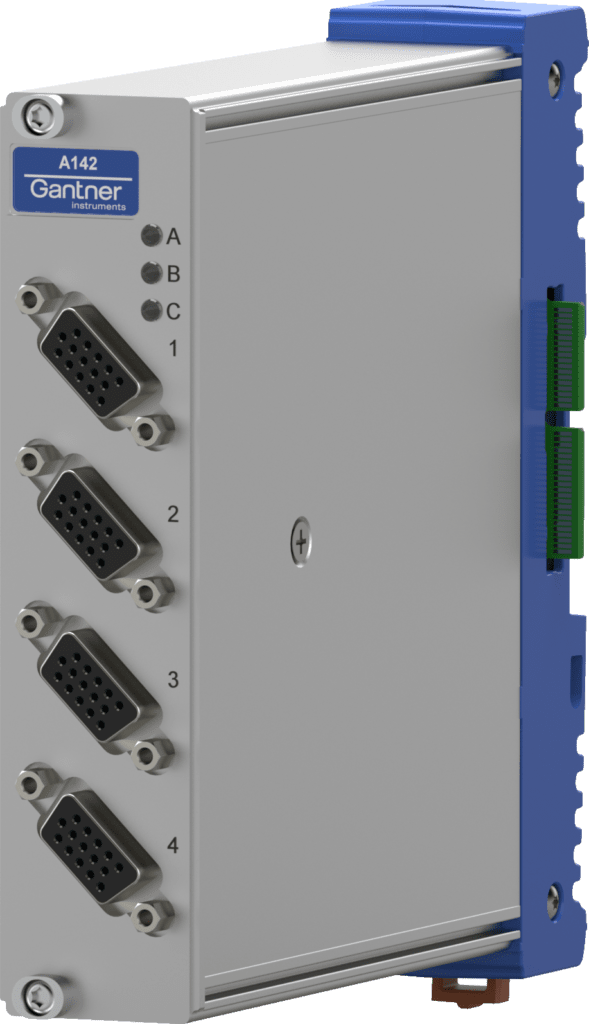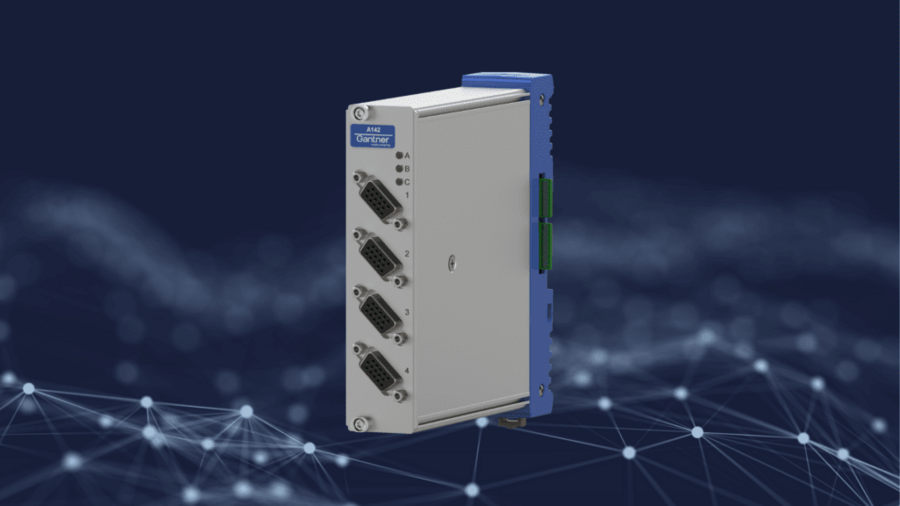You can acquire data and control your testing operations with Q.series X systems. With the introduction of our new Q.series X A142, we have extended our capabilities for force and motion control applications. The Q.series X A142 is a universal input and output module designed with closed-loop control applications in the field of automotive, aerospace, and mechanical testing in mind. It features all sensor interfaces typically found on a hydraulic, pneumatic, or electric test actuator. By combining with an onboard 10 VDC analog output and test.con’s PID controller functionality, you can turn your Q.series X system into an integrated data acquisition and control solution for any force or motion control application.
The A142 comes with three 18-Bit, 20 kHz analog inputs (SAR ADC). You can use two inputs for LVDT/RVDT sensors or strain gage-based transducers, allowing you to use dual-bridge load cells for critical force control applications. The third analog input is a 10 VDC voltage input that can be freely configured for, for example, a potentiometric sensor or an external function generator as input for the PID controller. An additional Synchronous Serial Interface (SSI) makes the A142 unique. SSI is a point-to-point serial communication standard for digital data transmission between a master and a slave. SSI is commonly used with absolute encoders, as well as with Temposonics position sensors from MTS Sensors.
What is SAR ADC?
The method of Successive Approximation Register (SAR) is a method used in A/D converters for converting the analog signal into a digital signal. It is based on the comparison of the analog input voltage with a reference voltage. In successive approximation, the comparison is made step by step and is repeated continuously, whereby the reference voltage is changed so that it increasingly approaches the input voltage. Unlike a sigma-delta ADC, the SAR architecture does not have latency. The relatively high sample rate and zero-latency make the SAR ADC suitable for closed-loop control applications.
Key Features:

- 2 Analog inputs for strain gage transducers or LVDT/RVDT sensors
- 1 Synchronous Serial Interface (SSI)
- 1 10 VDC analog input
- 1 10 VDC analog output
- 4 Digital inputs and outputs
- 20 kHz update rate
- Low-latency 18-Bit SAR ADC
- 500 VDC galvanic isolation for all analog inputs
- Onboard virtual channels for scaling, filtering, and calculations
- Available in Q.bloxx X, Q.brixx X or Q.raxx X packaging
- Optionally as EtherCAT slave module (XE version)
- 15 Pin standard D-sub connectors
Read more about our Q.series X Data Acquisition System here.
More articles
Symposium on International Automotive Technology, Siat 2024
We are thrilled to be part of this exciting event, and look forward to sharing the progress that is shaping the future of automotive technology. Join us as and discover the latest trends at SIAT 2024.
Read more...Integrated Video and Data Logging – Enhanced Context and Analytical Depth with GI.bench
When analyzing measurement data, numbers alone often leave unanswered questions, particularly during unexpected events. GI.bench solves this challenge by integrating synchronized video recording directly with your measurement data, providing powerful visual context and significantly enhancing analytical clarity.
Read more...GI.bench is OUT!
We continue to improve our GI.bench data acquisition software with a strong focus on making it a scalable platform that is easy to use for both small high-speed measurement and high-channel-count, mixed-signal data acquisition applications.
Read more...Gantner Instruments appoints Bienfait as new Business Partner in the Netherlands
Gantner Instruments is pleased to announce that is has appointed Bienfait B.V. as business partner in the Netherlands. Bienfait will support Gantner Instruments’ entire portfolio of test and measurement solutions. The appointment provides stronger local support for the country’s rapid growth in key sectors like high-tech systems, energy, water and advanced composite materials.
Read more...